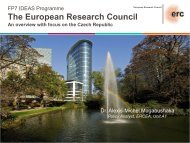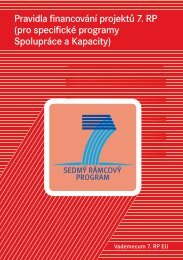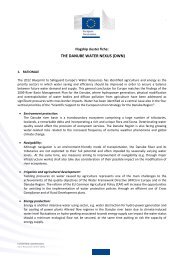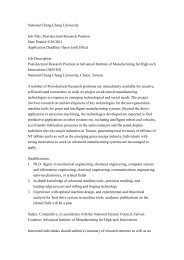Guide to Research and Innovation Strategies for Smart Specialisation
Guide to Research and Innovation Strategies for Smart Specialisation
Guide to Research and Innovation Strategies for Smart Specialisation
Create successful ePaper yourself
Turn your PDF publications into a flip-book with our unique Google optimized e-Paper software.
But how <strong>to</strong> present the prioritised areas? If the areas are presented in a <strong>to</strong>o generic way, such as<br />
eco-innovation; green energy; sustainable mobility or healthcare, most regions will fail <strong>to</strong> signal<br />
their unique competitive strengths. To be credible, effective <strong>and</strong> suitable <strong>for</strong> a concrete action<br />
plan (see next step), the priorities need <strong>to</strong> be expressed more precisely, such as ICT-based<br />
innovation <strong>for</strong> active ageing; or innovative solutions <strong>to</strong> reduce city congestion; wood-based<br />
solutions <strong>for</strong> eco-construction, etc.<br />
Prioritisation always entails risks <strong>for</strong> those who have <strong>to</strong> select those few domains that, as a result,<br />
will get privileged access <strong>to</strong> public funding. Common approaches followed in the past, which<br />
should not be repeated, were:<br />
• spreading the money across the most powerful lobbies with the frequent outcome that there<br />
were <strong>to</strong>o many priorities aiming at preserving the status quo rather than <strong>to</strong> look at future<br />
opportunities, or<br />
• imitating other regions. In that case, if the choice proved <strong>to</strong> be a mistake, at least this was a<br />
mistake others have made as well. At the end of the day regions contributed <strong>to</strong> produce a<br />
system with <strong>to</strong>o many small sites doing the same things <strong>and</strong> where agglomeration<br />
externalities were dissipated.<br />
However, these approaches failed <strong>to</strong> take in<strong>to</strong> account the essential knowledge in this matter,<br />
which is entrepreneurial knowledge. <strong>Research</strong> <strong>and</strong> innovation strategies <strong>for</strong> <strong>Smart</strong> <strong>Specialisation</strong><br />
should address the difficult problem of prioritisation <strong>and</strong> resource allocation based on the<br />
involvement of all stakeholders in a process of entrepreneurial discovery, which should secure a<br />
regionally- <strong>and</strong> business- driven, inclusive <strong>and</strong> open prioritisation process.<br />
There are different methodologies <strong>to</strong> organize such processes, e.g. surveys, seminars with<br />
participa<strong>to</strong>ry leadership methods, crowdsourcing, etc.<br />
Such an open, participa<strong>to</strong>ry process, <strong>to</strong>gether with the reliance on robust evidence base on<br />
regional assets, are the best guarantees <strong>to</strong> avoid both the risk of capture by interest groups <strong>and</strong><br />
the risk of lock-in in<strong>to</strong> traditional activities. Once the priorities are adopted it is important that<br />
the strategy is validated <strong>and</strong> endorsed by a broad regional constituency (in the <strong>for</strong>m of a<br />
representative Council or Forum, or through <strong>to</strong>p-level events).<br />
53

















